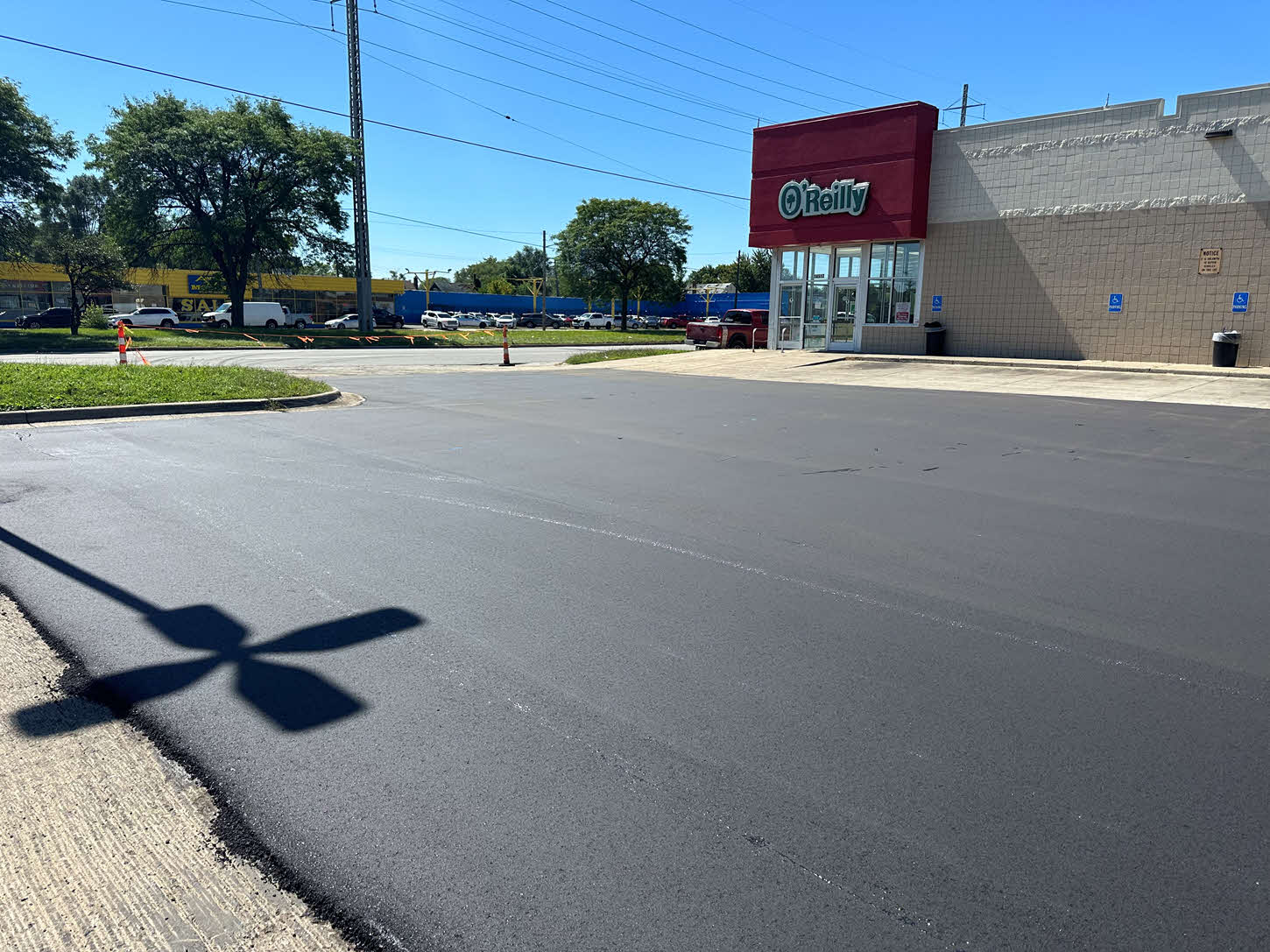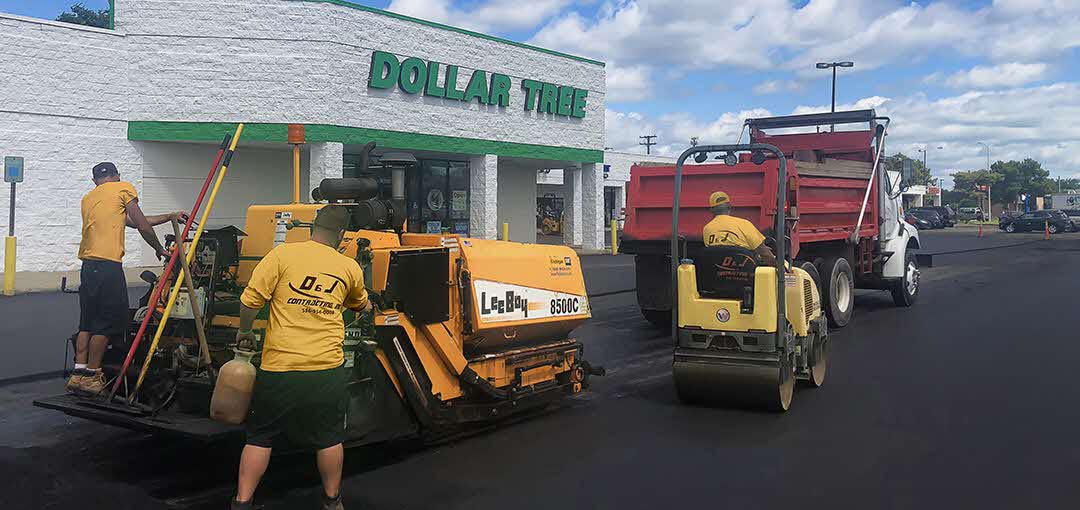Overlay inWaldenburg, MI
Durable Overlay Solutions for a Stronger, Longer-Lasting Surface
We Are Locally Owned & Operated For Over 37 Years
Contact Us Today!
We Serve Businesses In And Around The Following Cities:
About Overlay
Overlay in the City of Waldenburg A Comprehensive Guide for Commercial Properties
Introduction to Overlay
In the vibrant and ever-evolving cityscape of Waldenburg, maintaining the structural integrity and aesthetic appeal of commercial properties is paramount. Overlay, a process involving the application of a new surface layer over existing pavement, emerges as an invaluable solution. This method not only improves the property’s appearance but also enhances durability and performance. Property owners and managers increasingly seek Overlay services to ensure their premises remain competitive and inviting. Understanding the intricacies of Overlay can significantly impact decision-making for business premises in Waldenburg. This guide explores the process, benefits, and practical applications, offering comprehensive insights into why this service is vital for commercial properties.
The Overlay Process Decoded
The Overlay process begins with a thorough assessment of the existing pavement conditions. This step involves evaluating the surface for cracks, potholes, or other signs of wear and tear. A detailed inspection ensures that the right preliminary repairs are performed before applying the new layer. Once the initial assessment is completed, the surface is cleaned and prepped to facilitate the adhesion of the new material. This preparation phase often involves milling, which strategically removes a portion of the existing asphalt to allow for a seamless application.
After preparation, the actual Overlay material is applied. Typically, a Parking Lot Asphalt Overlay utilizes high-quality asphalt mixtures designed to withstand vehicular loads and environmental factors prevalent in urban settings like Waldenburg. Precision is key during this application to achieve uniform thickness and quality. Following the application, the new layer is compacted using heavy machinery to ensure a firm bond with the existing surface. The process concludes with a final inspection to guarantee quality and adherence to industry standards.
Economic and Functional Benefits
The economic advantages of Overlay are substantial. By implementing an Overlay rather than a full pavement replacement, business owners in Waldenburg can conserve financial resources while still achieving superior results. This method is less labor-intensive and often requires minimal disruption to business operations, which is crucial in a bustling urban environment. Overlays also contribute to enhanced property value. A well-maintained parking area reflects positively on a business, offering a welcoming environment for customers and enhancing their overall experience.
Functionally, Overlay significantly improves the surface’s durability and lifespan. It provides a Durable Surface Application that accommodates high traffic volumes typical of commercial operations. This increased durability means business owners face fewer repair downtimes, maintaining seamless operations. Additionally, an Overlay rectifies surface irregularities, ensuring smooth driving for customers and minimizing potential vehicle damage.
Real-world Applications and Practical Insights
Several commercial properties in Waldenburg have already reaped the benefits of Parking Area Rehabilitation through Overlay. Consider a busy retail center exuding a modern aesthetic with pristine paved surfaces, enhancing customer satisfaction and boosting sales. A local shopping complex, for instance, chose the expertise of D&J Contracting for its Overlay project. The decision was driven by their impeccable track record and commitment to quality. The result was a visually appealing and highly functional parking lot that contributed to the complex’s success.
Another example centers around a hospitality venue in Waldenburg. By opting for a well-executed Overlay, the venue not only enhanced its outdoor aesthetic but also ensured an enduring surface capable of withstanding the influx of guests and service vehicles. The strategic decision offered an immediate return on investment through increased bookings and customer retention.
Why Choose Expert Services
Partnering with experienced service providers like D&J Contracting can make a notable difference in the Overlay process. Their expertise ensures precision in execution, upholding the structural integrity and aesthetics of the commercial property. Professional service providers bring skilled personnel, state-of-the-art equipment, and a customer-centric approach, guaranteeing that the project meets client expectations.
In addition to technical proficiency, expert contractors provide valuable insights tailored to each project’s unique needs. Whether addressing specific environmental conditions or accommodating high traffic volumes, these professionals ensure the outcome aligns with commercial objectives while enhancing the property’s functionality and appeal.
As Waldenburg continues to prosper, the role of Overlay in maintaining and enhancing commercial properties grows increasingly significant. Business owners are encouraged to consider this innovative, efficient, and economically viable solution as part of their strategic property management plans. With experts like D&J Contracting, commercial entities can achieve both immediate improvements and long-term benefits, ensuring their properties remain assets in an ever-competitive market.
Ultimately, Overlay not only renews and revitalizes the urban landscape of Waldenburg but fortifies it for future challenges, offering enduring value to business owners. The considerable benefits and applications discussed illustrate why Overlay remains an integral element in the realm of commercial property management.
Overlay Gallery


Call Us Today to receive your Free Quote for
Overlay in Waldenburg
Serving: Waldenburg, Michigan

About Waldenburg, Michigan
The founders of Macomb Township arrived in the early 19th century in search of flat and fertile farmland, like that near the Clinton River. Many of these early settlers were of German descent, and the German influences remain today. The Township of Macomb was officially approved by the Legislative Council on March 7, 1834.
The township was named in honor of General Alexander Macomb, who was a highly decorated veteran of the War of 1812; his successful mercantile family owned most of Macomb County at one time.
Macomb Township was a large part of the lumber and logging industry of southeast Michigan in the late 19th century and early 20th century. Logs would be transported south from Wolcott Mill in Ray Township, down the Middle Branch of the Clinton River to sawmills. Romeo Plank Road is a historic route that follows the river on its western side.
Macomb Township experienced significant growth during the period of 2000–2008, boasting a 48% increase in population.
Macomb Township is at the geographic center of Macomb County. Mount Clemens, the county seat, is 7 miles (11 km) to the south, and downtown Detroit is 26 miles (42 km) to the south-southwest.
According to the U.S. Census Bureau, the township has a total area of 36.35 square miles (94.15 km), of which 36.25 square miles (93.89 km) are land and 0.09 square miles (0.23 km), or 0.26%, are water.
- Macomb (or Macomb Corners) is located in the northwest part of the township at 42°42′03″N 82°57′33″W / 42.70083°N 82.95917°W on Romeo Plank Road at 25 Mile Road, near the Middle Branch of the Clinton River.
- Meade is located in the northeast portion of the township at 42°43′03″N 82°52′26″W / 42.71750°N 82.87389°W on the boundary with Ray Township at 26 Mile Road and North Avenue.
- Waldenburg is located in the central portion of the township at 42°39′26″N 82°56′15″W / 42.65722°N 82.93750°W, a few miles south of Macomb on Romeo Plank Road and the Clinton River, chiefly in the 22 Mile Road area.
| Race / Ethnicity (NH = Non-Hispanic) | Pop 2000 | Pop 2010 | Pop 2020 | % 2000 | % 2010 | % 2020 |
|---|---|---|---|---|---|---|
| White alone (NH) | 47,968 | 70,906 | 77,042 | 95.03% | 89.10% | 84.05% |
| Black or African American alone (NH) | 420 | 3,096 | 4,627 | 0.83% | 3.89% | 5.05% |
| Native American or Alaska Native alone (NH) | 88 | 136 | 99 | 0.17% | 0.17% | 0.11% |
| Asian alone (NH) | 710 | 2,446 | 3,198 | 1.41% | 3.07% | 3.49% |
| Pacific Islander alone (NH) | 4 | 15 | 19 | 0.01% | 0.02% | 0.02% |
| Other race alone (NH) | 27 | 72 | 216 | 0.05% | 0.09% | 0.24% |
| Mixed race or Multiracial (NH) | 526 | 1,106 | 3,603 | 1.04% | 1.39% | 3.93% |
| Hispanic or Latino (any race) | 735 | 1,803 | 2,859 | 1.46% | 2.27% | 3.12% |
| Total | 50,478 | 79,580 | 91,663 | 100.00% | 100.00% | 100.00% |
As of the census of 2010, there were 79,580 people and 27,585 households in the township. The population density was 2,196.8 inhabitants per square mile (848.2/km). There were 27,585 housing units. The racial makeup of the township was 90.5% White, 3.9% African American, 0.2% Native American, 3.1% Asian, 0.0% Pacific Islander, 0.7% from other races, and 1.6% from two or more races. Hispanic or Latino of any race were 2.3% of the population.
As of the census of 2000, there were 50,478 people, 16,946 households, and 14,065 families residing in the township. The population density was 1,391.7 inhabitants per square mile (537.3/km). There were 17,922 housing units at an average density of 494.1 per square mile (190.8/km). The racial makeup of the township was 96.12% White, 0.84% African American, 0.19% Native American, 1.41% Asian, 0.01% Pacific Islander, 0.31% from other races, and 1.12% from two or more races. Hispanic or Latino of any race were 1.46% of the population.
There were 16,946 households, out of which 45.3% had children under the age of 18 living with them, 73.7% were married couples living together, 6.5% had a female householder with no husband present, and 17.0% were non-families. 13.7% of all households were made up of individuals, and 3.9% had someone living alone who was 65 years of age or older. The average household size was 2.97 and the average family size was 3.30.
In the township the population was spread out, with 30.2% under the age of 18, 6.9% from 18 to 24, 35.1% from 25 to 44, 20.3% from 45 to 64, and 7.4% who were 65 years of age or older. The median age was 34 years. For every 100 females, there were 99.6 males. For every 100 females age 18 and over, there were 97.3 males.
The public school districts that serve residents of Macomb Township are Chippewa Valley Schools, L’Anse Creuse Public Schools, New Haven Community Schools and Utica Community Schools. For public library services, the Township is served by the Clinton-Macomb Public Library district.
Call Us Today to receive your Free Quote for
Overlay in Waldenburg
Related Services in Waldenburg, Michigan
We Serve Businesses In The Following Zip Codes:
48007, 48015, 48021, 48026, 48035, 48036, 48038, 48042, 48043, 48044, 48045, 48046, 48047, 48048, 48050, 48051, 48066, 48071, 48080, 48081, 48082, 48083, 48084, 48085, 48088, 48089, 48090, 48091, 48092, 48093, 48098, 48099, 48225, 48230, 48236, 48310, 48311, 48312, 48313, 48314, 48315, 48316, 48317, 48318, 48397